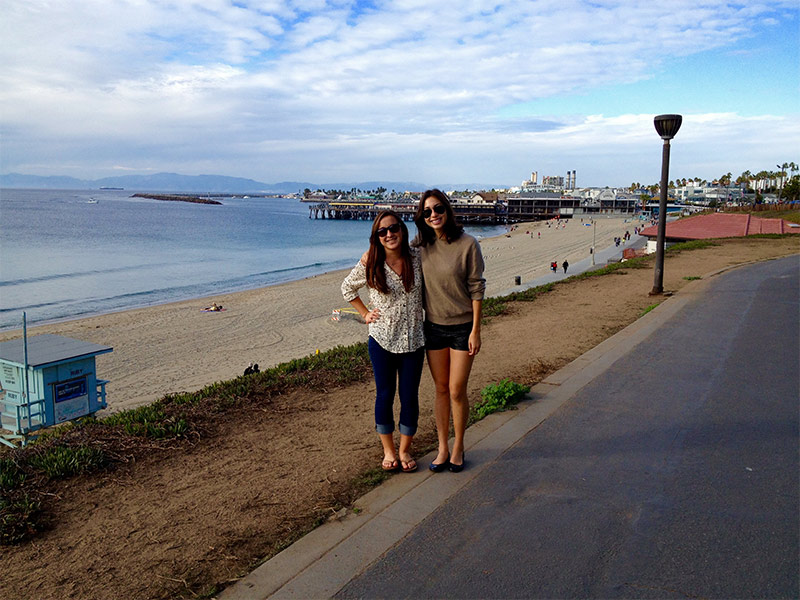
Katherine Teshima (on the left) and her friend near the Redondo Beach Pier.

Maayong adlaw, or good day to the Heal the Bay community!
My name is Katie, and I thought the best way to begin introducing myself was with a greeting in the language I’ve been speaking for the past 15 months. I’m currently serving as a United States Peace Corps Volunteer assigned in the beautiful tropical islands of the Philippines.
Before I hopped overseas, I grew up along the sandy shores of Redondo Beach.
There was hardly a summer day that you wouldn’t find me feet first in the sand and head first in the water. I attended Redondo Union High School from 2007-2011 where I first became aware of issues that threatened the ocean as well as opportunities to help out. I was lucky enough that Heal the Bay had broken ground as a club during my junior year, and I dove right in.
During my time at Heal the Bay, I found a new means of connecting with the ocean that I loved so much. For the first time I considered (and literally sorted through) the waste we produce and how we manage to disconnect ourselves from our actions and the environment. I felt pride in the contribution I made during beach clean ups and soon realized that volunteerism was with me to stay.
Fast forward six years and I find myself in no other occupation than a “professional volunteer” with the United States Peace Corps. On the opposite side of the world, in a small town in which I am the only American for miles, and for 27 months I fight for the same cause I took up all that time ago.
As a Coastal Resources Management Volunteer I work within a local government unit alongside small fisherfolk organizations and community groups in improving practices and governance of their environment. This can include anything from solid waste management to coastal habitat assessments and environmental education. On a smaller, more personal scale I’ve found a new place that I call home. I’ve learned a thousand times more from the people and culture than I can ever hope to give back. My perspective has been tested, flexed and grown from interacting in an environment wholly different from my origin.
It is not without difficulty that I continue “the hardest job I’ll ever love.”
As stewards of the ocean we face ever mounting challenges related to its health and sustainability. Global environmental issues are represented in different shades at all local levels and require the associated community’s participation. It is only through the involvement of local stakeholders that the unique conditions and challenges can be addressed in an appropriate and timely manner. With the participation of those individuals directly using the resources we strengthen the capacity of our communities for change.
As we set out to transform our world/community/selves, we must be resilient against the threats of frustration and doubt.
What I’ve found more important than finding a solution to any one problem is building the strength to rise and brave the tasks at hand. It is only through our collective steps forward, backward, and all directions in between that our very real, very important impact will be made.

Through this Community Mangrove Training, local leaders gained practical skills and knowledge to rehabilitate their mangrove forest ecosystems. Mangroves are a critical part of the Philippine environment, as they provide protection for communities from strong storms, nursery habitat for fish and wildlife, and water quality maintenance.

I helped assess the fishing effort in our local bay by surveying the number, GPS location and type of fishing activity. Developing sustainable fishing practices is crucial in the Philippines where more than 50% of animal protein intake is derived from marine fisheries.

The opportunity to work with students – to learn a little bit and laugh a whole lot – has strengthened the connection I have with my community and my Peace Corps service.

I love to share my journey and inspire others to consider volunteering in their own communities and abroad. I recently spoke about my work at Heal the Bay’s Santa Monica Pier Aquarium.
Our work isn’t possible without the real passion, action and commitment from people like Katie and you. Help us spark more positive change in our region, up and down the coast, and around the world.
Make a Year-End Gift to Heal the Bay
































